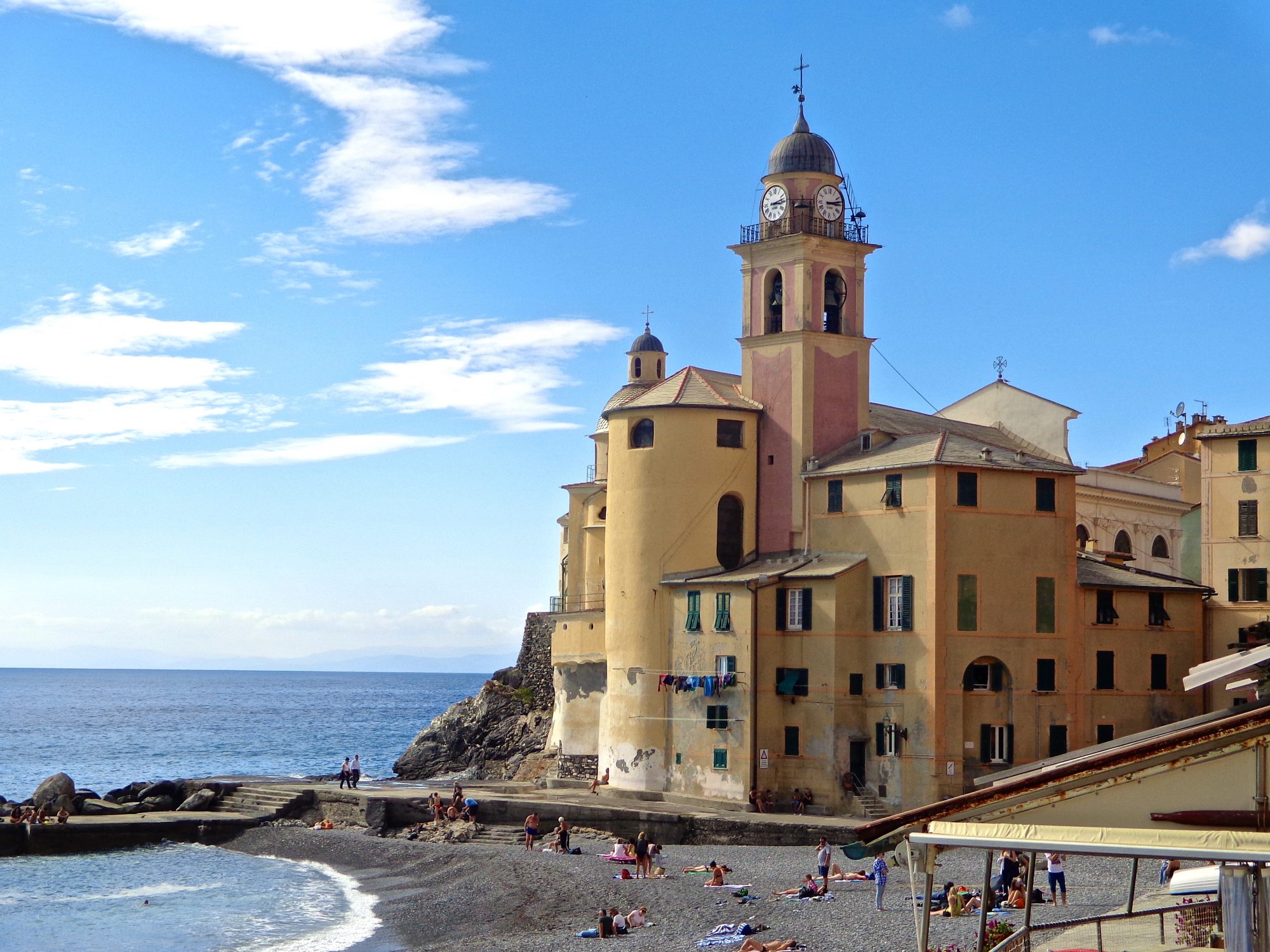
Italian hill towns capture my imagination and quicken my pulse. Whenever I catch a glimpse of one, I’m reminded of my childhood fairytale books. Filled with pictures of enchanted castles and medieval villages, they rise mysteriously toward the clouds on faraway hilltops.
Orvieto is definitely one of those. Sprawled out on a massive bed of cavernous tufa rock high above the valley floor, it is a vision to behold. The sweeping landscape is dotted with cypress trees and well-groomed vineyards. Less that 90 minutes north of Rome, the old walled city is rich in medieval charm and is nearly traffic-free.

I love to linger and soak up the surroundings at different times of the day. Dusk is always my favorite. The winding cobbled streets and outdoor cafes take on a romantic ambience as candle light flickers off the stone walls. Trattorias disperse delicious aromas of roast meat and savory sauces. Idyllic.
But don’t let the serenity fool you. From it’s very beginnings, Orvieto has known a troubled past.
Let’s take a quick peek into those bygone years…
It all began with the Etruscans ~
What began as an Etruscan settlement (Velzna) in the 9th century BC, became Roman property after an arduous two-year siege in the third century BC. The Etruscans were ingenious and crafty, and had carved out a large network of tunnels and wells within the expanse of penetrable tufa rock below their feet. The position of the walled citadel increased the difficulty of an invasion, making it nearly impossible for the Romans to take the city.
Orvieto Challenged by the Middle Ages ~
During the early middle ages, Orvieto became prosperous under a developed, well-organized political system and urban structure. This all changed when, sadly, the plague infected the city of 8,000.
“At Orvieto the plague began in May 1348. Some 500 died in a very short space of time, many of them suddenly; the shops remained closed, and business and work was at a standstill. Here it ran its usual five months’ course, and finished in September, when many families were found to have become extinct.” (G. Gigli, Diario Sanese).
Constant fighting among highly ranked noble families also weakened the city. Orvieto was no longer a free municipality and governing city-state, but became a mere shadow of its past. Poverty ridden and sickly, the populace limped along despite pestilence and increasing economic uncertainty.

Fire, Brimstone and the Last Judgement ~
The city’s greatest artistic treasures give a strong indication of the political and religious turmoil experienced by the populace. Apocalyptic delirium was inspired by the half-crazed Dominican friar Girolamo Savonarola. Luca Signorelli’s paintings in the Orvieto Cathedral chapel reflect the effects of Savonarola’s sermons, resulting in a growing religious anxiety.

A terrifying Renaissance Apocalypse, a series of frescos by Signorelli painted between 1499 and 1504, fills a chapel in the Orvieto Cathedral. In the midst of the city’s post-plague devastation, it must have been natural for such a painter to envision the full depth of human depravity.

Signorelli’s frescos had a huge impact on his contemporaries, including Michelangelo, who studied them before he created his own masterpieces on the ceiling of the Sistine Chapel and the Last Judgement on its far wall.

A Cathedral Hides a Precious Relic ~
Prior to the plague’s devastation, Pope Urban IV took up residence in Orvieto due to the civil unrest in Rome. It was he who commissioned the Cathedral to begin construction in 1290 as a resting place for the holy relic named the Corporal of Bolsena. This relic is the result of a Eucharistic miracle at Bolsena.
As the story goes, it was in 1263 that a traveling Bohemian priest, burdened by doubts concerning his faith, stopped at the tomb of St. Christina in Bolsena to take communion. As he held the host, red drops of blood dripped from it onto the linen. Immediately, his faith was strengthened and the stained linen relic came to be housed inside a small chapel within the Cathedral.

The Cathedral’s grey and white striped exterior must have given a glimmer of hope and lifted the spirits of the people. Built very similarly to the Duomo in Siena, it was also a competitive move towards them as Orvieto’s arch-enemy.
The papacy brings prosperity ~
As Orvieto became an important papal province, its economy began to prosper. It grew in popularity with cardinals and popes, who were drawn to an ambrosial sense of peace and security, so contrary to the past few hundred years. Beginning in 1600, urban renewal and profound architectural restoration occurred within the city and have continued to the present.
The town hall has an official symbol that embodies the recent history of Orvieto. It consists of a red cross on a white background, symbolizing the loyalty of the city to the papal party named Guelfi, a black eagle which refers to the Roman domination, a goose which is a reference to the geese who saved the Campidoglio (Capitoline Hill) in Rome, and the lion that symbolizes the loyalty to the papacy of Orvieto.

Today, Orvieto is bustling with tourists who enjoy the medieval architecture, shopping, abundance of cozy Italian restaurants and some of the best wine in Italy. The ambience changes after dark. Quiet and serene, it is the perfect place for an after dinner stroll through its medieval maze of golden lamp lit streets.

Orvieto is prosperous and friendly with much to admire. It is the result of a people who endured waves of hardships that threatened to wipe them out. They chose to work toward and embrace hard-won achievements that are visible throughout the city today.







































